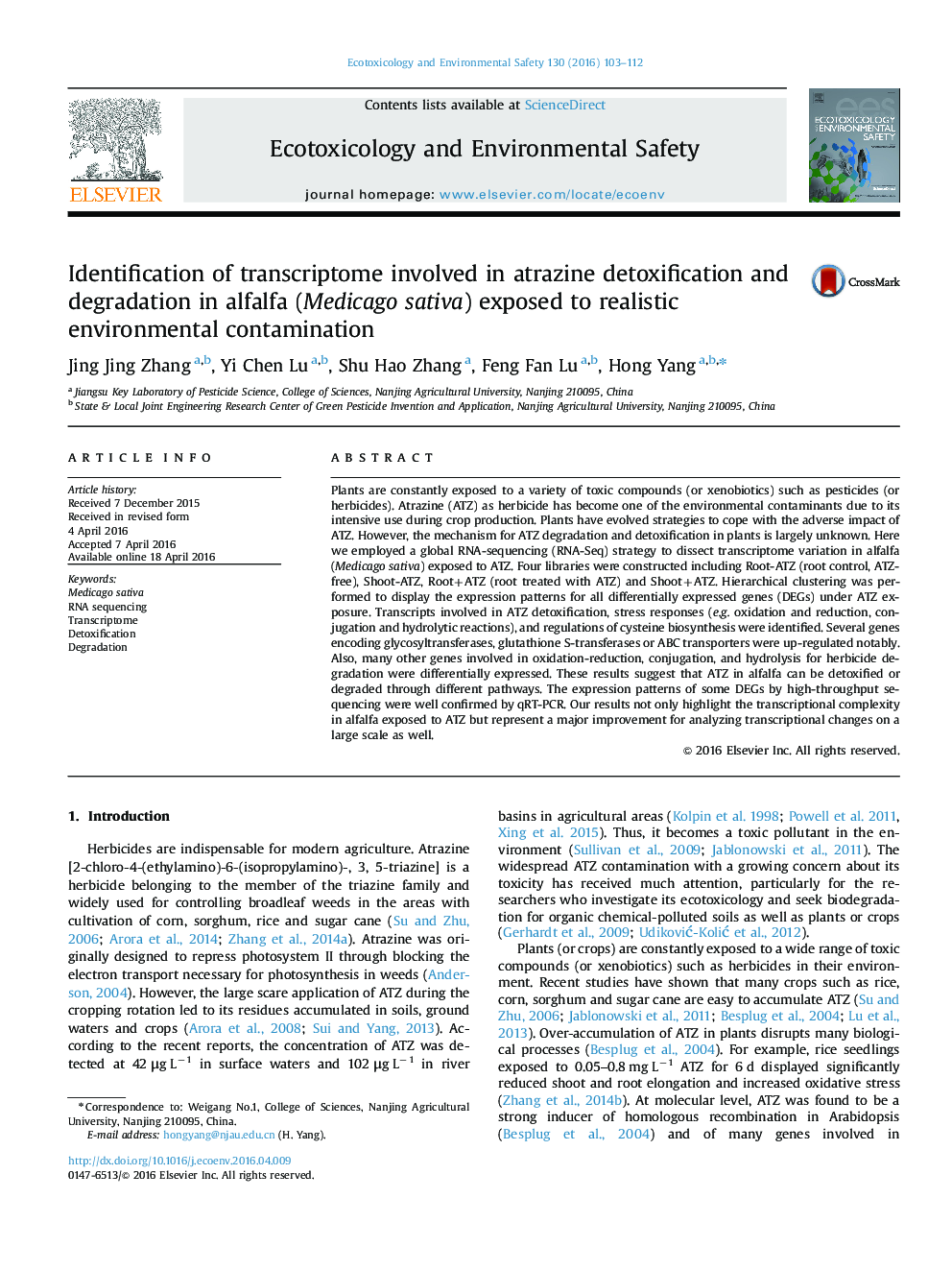| کد مقاله | کد نشریه | سال انتشار | مقاله انگلیسی | نسخه تمام متن |
|---|---|---|---|---|
| 4419167 | 1618933 | 2016 | 10 صفحه PDF | دانلود رایگان |

• Myriads of transcripts were obtained from alfalfa.
• Transcripts involved in atrazine detoxification and other stress responses.
• Atrazine in alfalfa can be detoxified through different pathways.
• Many genes involved in herbicide degradation have been analyzed.
Plants are constantly exposed to a variety of toxic compounds (or xenobiotics) such as pesticides (or herbicides). Atrazine (ATZ) as herbicide has become one of the environmental contaminants due to its intensive use during crop production. Plants have evolved strategies to cope with the adverse impact of ATZ. However, the mechanism for ATZ degradation and detoxification in plants is largely unknown. Here we employed a global RNA-sequencing (RNA-Seq) strategy to dissect transcriptome variation in alfalfa (Medicago sativa) exposed to ATZ. Four libraries were constructed including Root-ATZ (root control, ATZ-free), Shoot-ATZ, Root+ATZ (root treated with ATZ) and Shoot+ATZ. Hierarchical clustering was performed to display the expression patterns for all differentially expressed genes (DEGs) under ATZ exposure. Transcripts involved in ATZ detoxification, stress responses (e.g. oxidation and reduction, conjugation and hydrolytic reactions), and regulations of cysteine biosynthesis were identified. Several genes encoding glycosyltransferases, glutathione S-transferases or ABC transporters were up-regulated notably. Also, many other genes involved in oxidation-reduction, conjugation, and hydrolysis for herbicide degradation were differentially expressed. These results suggest that ATZ in alfalfa can be detoxified or degraded through different pathways. The expression patterns of some DEGs by high-throughput sequencing were well confirmed by qRT-PCR. Our results not only highlight the transcriptional complexity in alfalfa exposed to ATZ but represent a major improvement for analyzing transcriptional changes on a large scale as well.
Figure optionsDownload as PowerPoint slide
Journal: Ecotoxicology and Environmental Safety - Volume 130, August 2016, Pages 103–112